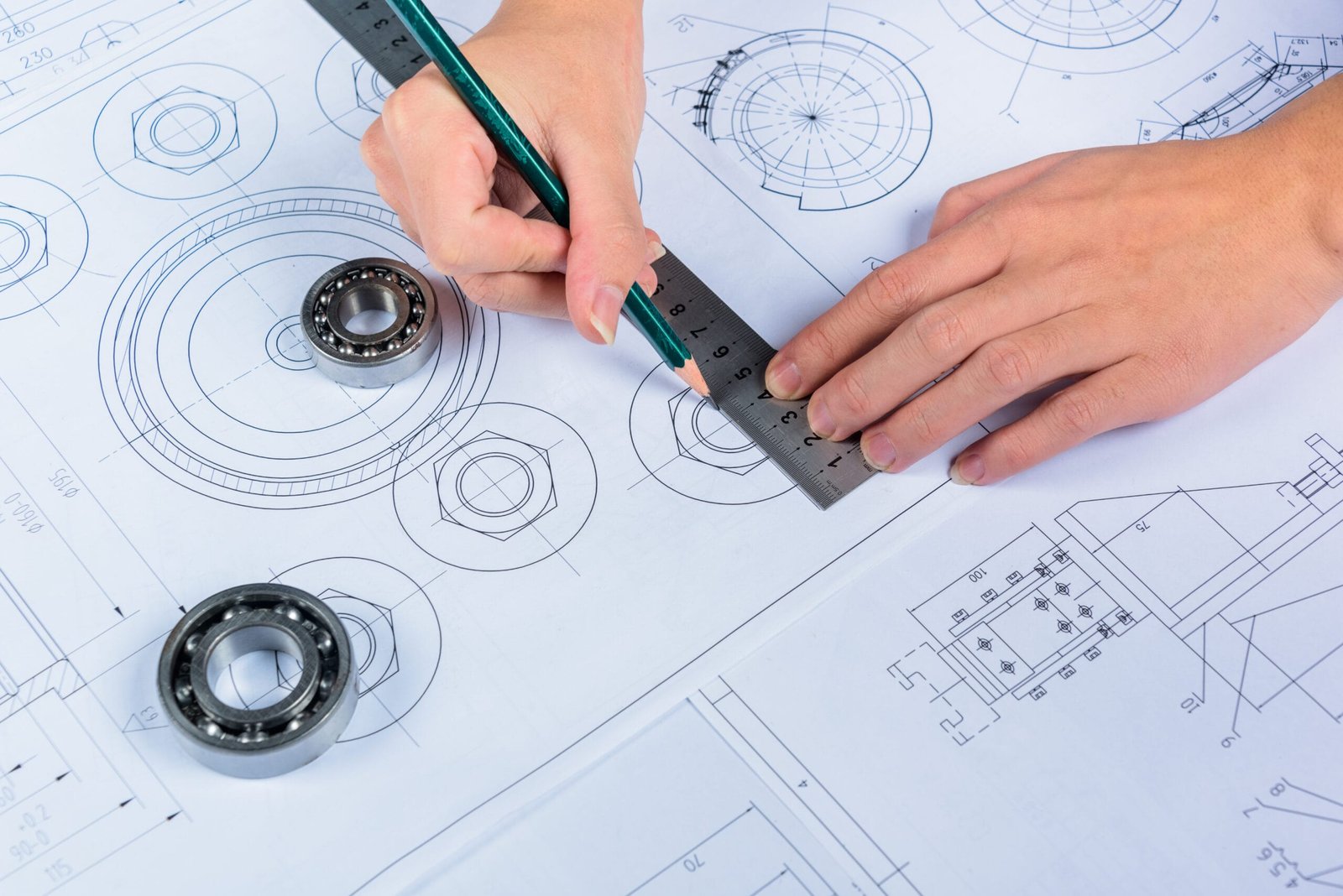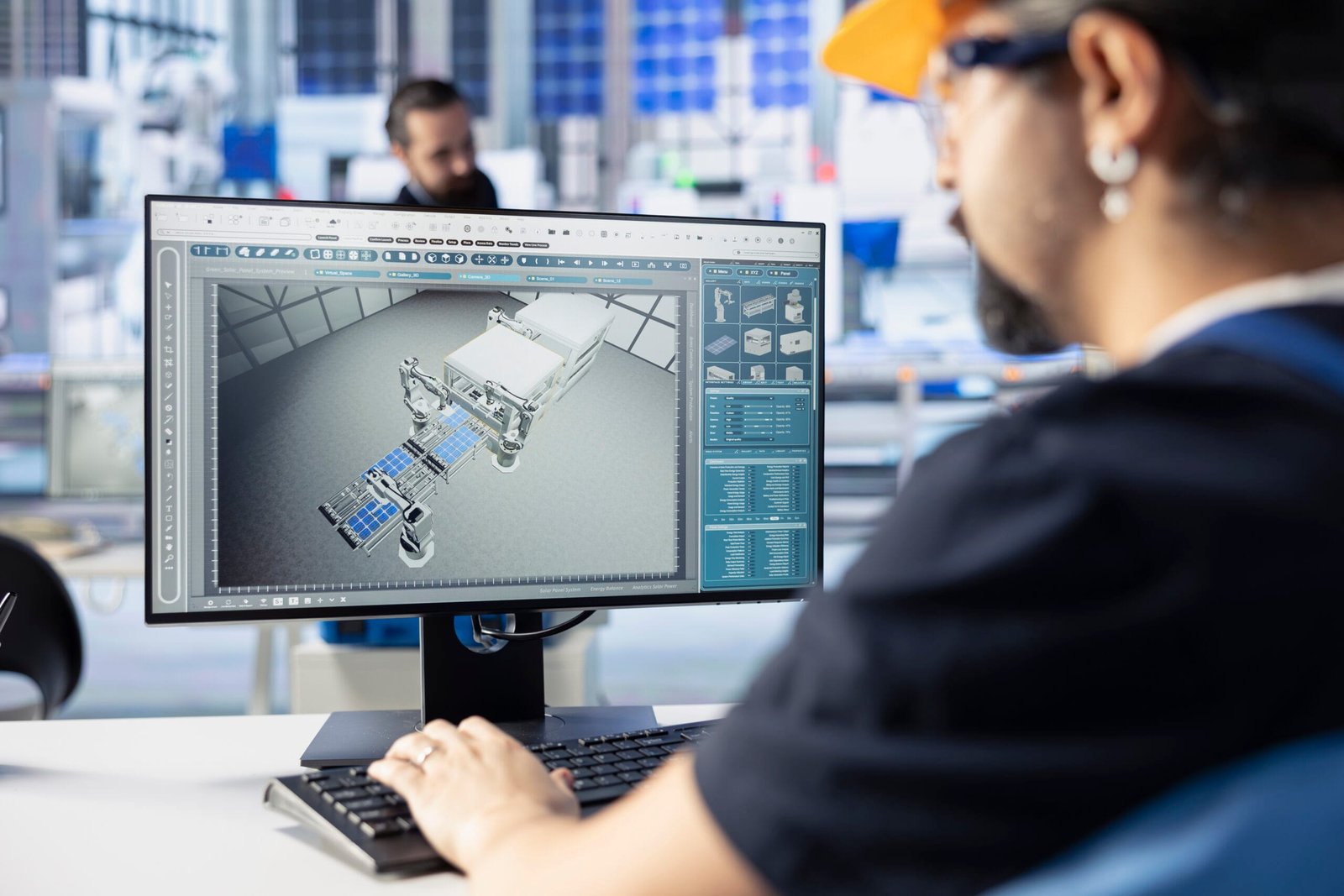Description:
Discover how DesignHok uses Fusion 360 rendering to create photorealistic visualizations that enhance product development, streamline communication, and impress clients. This blog dives into the benefits, workflow, and impact of high-quality rendering in the design process.
Introduction
In today’s competitive design industry, visualization plays a critical role in communicating ideas, validating designs, and captivating clients. For DesignHok, a leader in mechanical and industrial design services, Fusion 360 rendering has become a core tool in their creative process. This powerful feature enables DesignHok to create photorealistic images of 3D models, helping clients visualize products before they are built. From product prototypes to complex mechanical assemblies, Fusion 360’s rendering capabilities allow DesignHok to deliver precision, clarity, and creativity in every project.
What is Fusion 360 Rendering?
Fusion 360, developed by Autodesk, is an integrated 3D CAD, CAM, and CAE tool that includes a powerful cloud-based rendering engine. Rendering in Fusion 360 involves transforming 3D models into high-quality images with realistic lighting, shadows, materials, and environments. These visual outputs are not just visually impressive—they are essential tools for marketing, presentation, and product development.
Fusion 360 offers both local and cloud rendering, allowing users to generate images quickly using Autodesk’s cloud servers or their local machine. With simple material libraries, background settings, camera angles, and lighting options, designers can customize scenes that accurately represent their design intent.

Why DesignHok Uses Fusion 360 Rendering
At DesignHok, visual storytelling is everything. Here’s why Fusion 360 rendering has become an essential part of their workflow:
1. Client Communication
Most clients are not engineers. Complex CAD models can be difficult for non-technical stakeholders to interpret. Fusion 360 rendering turns these models into lifelike images, making it easier to explain product functionality and aesthetics. Clear visualizations build confidence and foster better decision-making.
2. Design Validation
By rendering models at different stages of development, DesignHok can visually assess proportions, colors, surface finishes, and assembly fit. This step often reveals areas for improvement before moving to physical prototyping, saving time and cost.
3. Marketing and Presentations
Renderings are powerful assets for marketing. Whether it’s a product pitch, trade show presentation, or investor deck, a polished rendering speaks volumes. DesignHok frequently uses Fusion 360 renderings to create high-impact visuals that make their designs stand out.
4. Speed and Efficiency
Because Fusion 360 is an all-in-one platform, there’s no need to export models to another rendering software. This streamlined workflow helps DesignHok save time and maintain model fidelity without switching between programs.
How the Fusion 360 Rendering Process Works at DesignHok
DesignHok follows a well-defined rendering workflow using Fusion 360 to deliver consistent and professional results.
Step 1: Finalizing the 3D Model
Before rendering, the model must be complete and error-free. DesignHok ensures all components are properly positioned, labeled, and assembled.
Step 2: Applying Materials
Fusion 360 comes with an extensive material library. Metals, plastics, glass, rubber, and custom finishes can be dragged and dropped onto parts. DesignHok carefully selects materials based on the product’s function and appearance.
Step 3: Setting the Scene
This includes choosing a suitable background, adjusting the environment light, and setting up the camera angle. DesignHok often uses neutral backgrounds to keep the focus on the product, unless the client requests a specific scenario.
Step 4: Lighting Adjustments
Lighting can make or break a rendering. Fusion 360 allows real-time lighting preview, letting the team adjust shadows, reflections, and highlights for dramatic or soft effects.
Step 5: Rendering and Refinement
DesignHok uses cloud rendering to free up their workstations. Multiple renders are tested to evaluate quality, realism, and perspective. Final images are exported in high resolution for use in print, web, and digital presentations.
Benefits of Fusion 360 Rendering for DesignHok Clients
- Realistic Previews: Clients see exactly what their product will look like in the real world.
- Reduced Prototyping Cost: Fewer physical models are needed thanks to accurate visuals.
- Faster Project Approvals: Lifelike renderings reduce confusion and speed up decision-making.
- Improved Brand Image: High-quality visuals elevate professionalism and trust in DesignHok’s capabilities.
Real-World Examples from DesignHok
- Consumer Electronics Enclosure: A compact device casing was rendered with polished aluminum and translucent plastic to help the client finalize aesthetics.
- Industrial Machine Component: A gear system was visualized using metallic materials and realistic lighting to validate assembly fit and showcase to investors.
- Medical Equipment Design: Clean, sterilized render scenes were created for marketing brochures, helping secure client funding for production.
Tips from DesignHok on Using Fusion 360 Rendering Effectively
- Use HDR Environments for better lighting realism.
- Always test render in lower quality before committing to high-res output.
- Customize materials for unique textures and finishes beyond the default library.
- Name and organize components clearly for a clean rendering setup.
- Keep the camera simple and avoid overly dramatic angles unless required.
Conclusion
Fusion 360 rendering has become a game-changer for DesignHok, enabling them to bridge the gap between technical models and visual understanding. It helps streamline communication, validate ideas early, and enhance the presentation of every project. Whether you’re designing a cutting-edge consumer product or a precision mechanical component, Fusion 360’s rendering tools offer the perfect blend of speed, quality, and ease of use. At DesignHok, these capabilities ensure every design doesn’t just function—it looks phenomenal before it even becomes real.
FAQs About Fusion 360 Rendering at DesignHok
Q1: Does Fusion 360 rendering require a powerful computer?
A: Not necessarily. Fusion 360 offers cloud rendering, so you can process high-quality images on Autodesk’s servers, freeing up your local system.
Q2: Can I request custom scenes or branded backgrounds for renderings?
A: Yes, DesignHok offers custom scene creation, including branded environments, product-use scenarios, or industry-specific backdrops.
Q3: How long does rendering take?
A: It depends on the image quality and model complexity. Basic renders can take a few minutes, while high-resolution cloud renderings may take 15–30 minutes.
Q4: Are the rendered images suitable for printing and presentations?
A: Absolutely. DesignHok delivers high-resolution images perfect for marketing materials, posters, brochures, and digital presentations.
Q5: Can Fusion 360 render animations or only still images?
A: Fusion 360 primarily supports still image rendering, but DesignHok can export animations or walkthroughs using additional tools integrated with Fusion 360.





